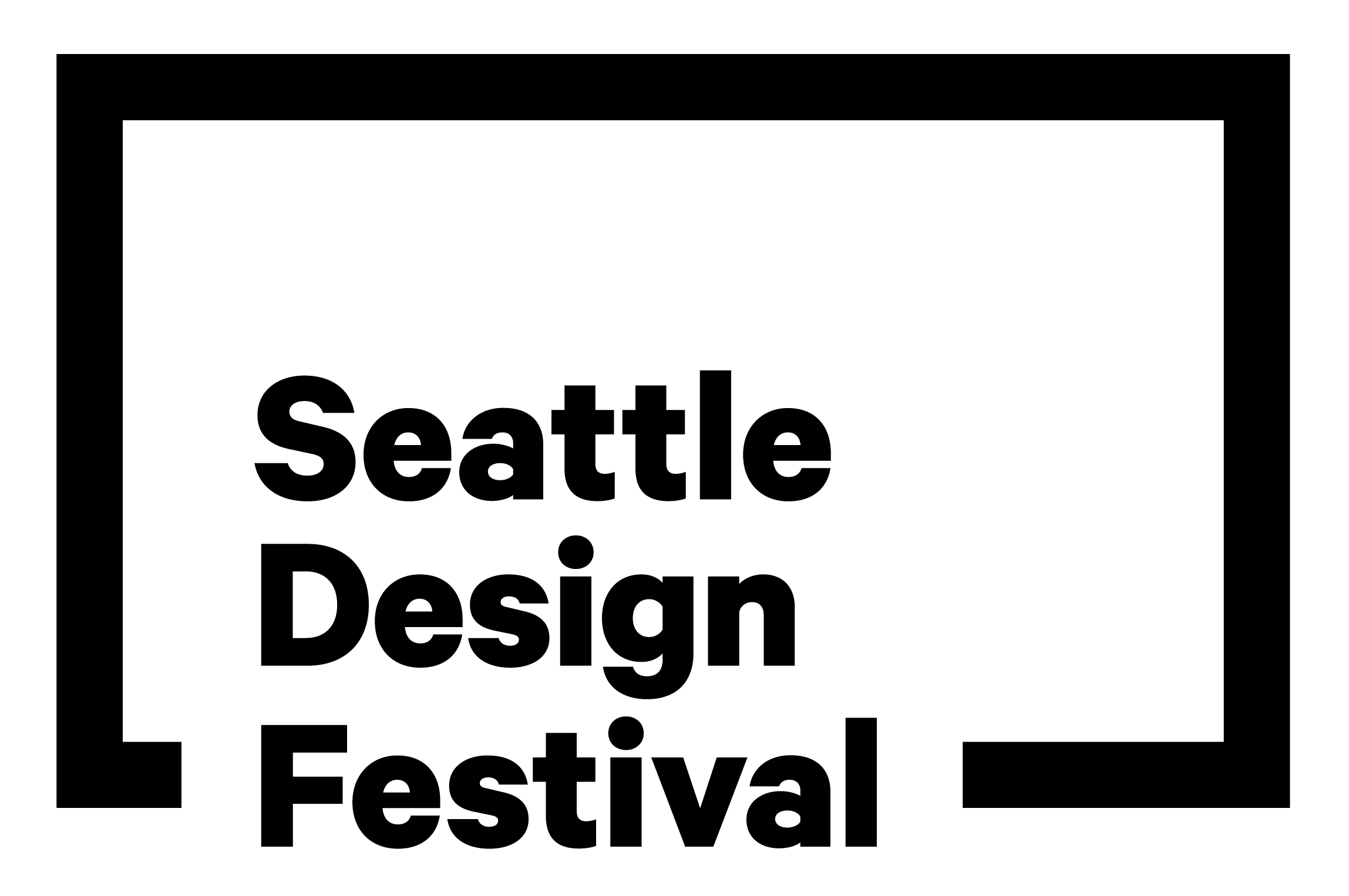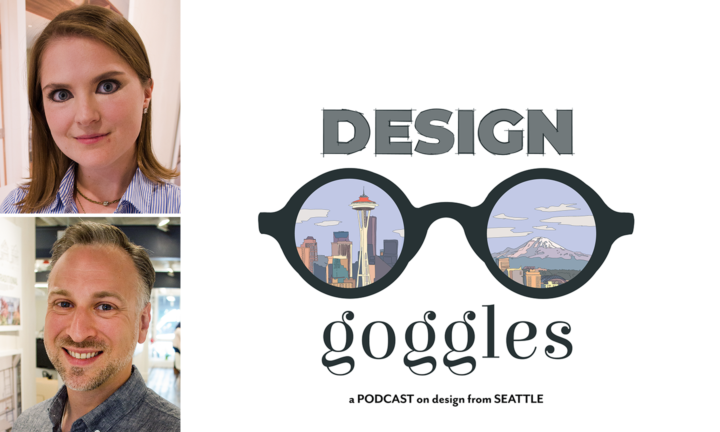Design Goggles is a podcast centering on the evolution of the world around us through the lens of design. Architecture, interior design, graphic design, fashion, art, tech, UX and more — no corner of the design world is off-limits as they invite guests to share how design informs their work, life, and the spaces they inhabit. Hosts Charles Fadem and Rachel Simrell Scott are both recovering architects. Charles now focuses on commercial interiors, and Rachel on marketing and branding.
Q: What does BALANCE mean to you when you think about design?
Charles Fadem (CF): I think of Collaboration. The best design experiences I have ever had were working closely with clients and other designers who were as excited to be learning and sketching and creating as I was. Creative minds thinking differently, working together. That’s Balance to me.
Rachel Simrell (RS): I’m hard pressed to think of an example of great design (in any field) that didn’t consider balance, and I don’t mean only in an aesthetic or a functional sense, either. You can’t achieve or maintain balance with a short-term mindset. True balance requires a long view and a growth mindset. We might all aspire to be a part of something that lasts — but you don’t do that by solving a problem with the quickest, cheapest approach. Design success comes from balancing what you know now with what you think might be the case in the future.
Q: What design/social trends (past or present) inspire your practice?
CF: Residential features showing up in Public spaces – The idea of creating a home wherever you go, whether it be a home at the office, a home in a local coffee shop or bar, or even in a park. Everywhere we go can feel like home with some thoughtful design.
RS: Resiliency, adaptability, longevity, and quality are my design philosophy anchors.
Q: How do you explain what you do for a living?
CF: I just tell people I’m a designer. Architecture, Interiors, Landscape, Graphic Design, UX, there are no borders or boundaries anymore. If you love to think and create, and care about building the world more beautiful, you’re a designer.
RS: I use design to solve problems. Sometimes it manifests in physical objects you can touch, sometimes it manifests in digital spaces you experience, and sometimes it manifests in the structural processes of an organization.
Q: What are your go-to’s for when you’re seeking inspiration?
CF: Science Fiction – Writers and Production Artists have been imagining our future for generations and in a way, production design for sci-fi movies is like my other dream job.
RS: Art, science, nature, visual culture, history… Nothing like going down an interdisciplinary rabbit hole to find that exciting link that sparks your next idea.
Q: Tell us about a project that you worked on that you are most proud of.
CF: I worked on designing a tattoo shop, with an incredible client who had great ideas, but not a ton of budget. She trusted us completely and collaborated closely with us, and despite a bunch of challenges, we created something unique. When I attended the opening party and saw how much the space meant not only to my client, but to her community who were going to enjoy it, it was one of the most special moments in my career.
RS: I’ve found it very fulfilling to collaborate across my roles at two companies: Board & Vellum, where I am lucky to spend my time in both design and strategy, and Emerald Seven, a company I co-founded with my partner Blake Scott, where we design and build human-centered digital products. So often, in fields designing and building digital or physical spaces, a project ends with a “launch” or a “move in” and that’s it, the job is done. But, of
course, the world is not static! When you forge long-lasting professional partnerships, it allows projects to not simply end with a “launch,” but rather to evolve as companies and conditions change. My current favorite example of this in my own professional life is the Board & Vellum website, which, through my work at both companies, has become a “living” project: growing and evolving through concept, design, and production, with numerous integrative iterations over several years. It’s that constant and continual iteration of design and development that really excites me.
Q: If you were to give a TED talk, what would it be about? What’s your “idea worth spreading”?
CF: Design is storytelling, but telling a good story is the trick.
RS: No one is an expert in everything. Most people aren’t an expert in anything. And those that are experts at something often have incredibly huge blind spots. Be amazing at something, but don’t succumb to tunnel vision, and don’t be fooled by people who already have. Seek collaboration and integrative design processes wherever you can, because none of us exist alone, and the complex, messy problems we face in this world aren’t going to be solved by one person working in a vacuum.
Q: My favorite thing about my city is…
CF: Seattle is the most beautiful city I have ever lived in. I am constantly blown away by not just the natural beauty surrounding us, but the almost futuristic neon landscape of Seattle at night.
RS: I’ve been a Seattleite since I was two and I can count on one hand other cities I’ve visited that tick all the boxes Seattle does: great food, great views, great culture, great neighborhoods, great people, great weather (yes, even the rain). I love that I get to call it home.
Q: If you could sum up your outlook on life in a bumper sticker, what would it say?
CF: “Make it so!”
RS: “My outlook on life doesn’t fit on this sticker.”
Q: Why do you do what you do? What do you want to leave behind for future generations?
CF: I love design, and love stories. I hope that the stuff I created during my time on the planet made the world more beautiful in some way, and that if I come up in a story that it’s the kind of story that makes people smile, or laugh, or both.
RS: I can’t not do what I do — problem-solving through design makes my day a little better, and I hope, other people’s day, too. We will always face new challenges, many of which will be ones we couldn’t even imagine today. My hope is that those of us learning how to solve today’s challenges (large and small) will pass on not only the progress we’ve made, but the design and problem-solving skills we’ve honed along the way.
Q: What is your super power?
CF: I am curious about everything.
RS: I see details most people miss. It’s a super power, but — I suppose like all super powers — it’s also a curse.
Learn more about Charles’ and Rachel’s work:
Website – https://www.boardandvellum.com/podcasts/design-goggles
Twitter – @designgoggles
Instagram – @designgogglespodcast
Facebook – https://www.facebook.com/designgogglespodcast
Email – charles@boardandvellum.com | rachel@boardandvellum.com





